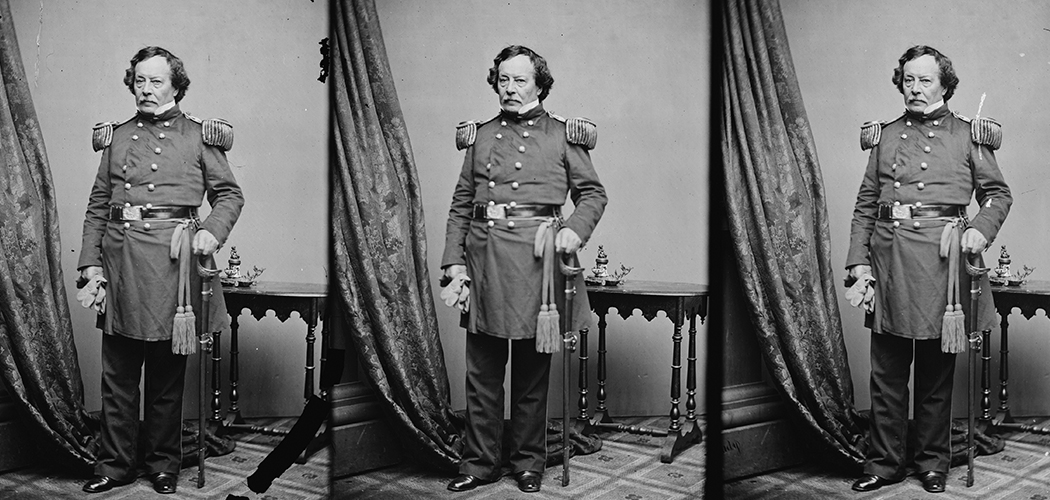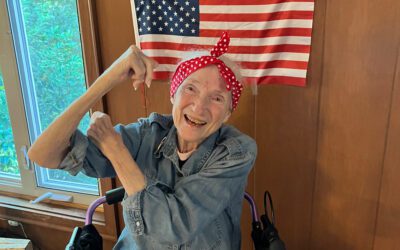[title subtitle=”words: Tom Wing, Historian and Author
images: courtesy Fort Smith Museum of History “][/title]
What do a street in Las Vegas, a Pleistocene-era lake, a dam, a GM automobile, a crater on Mars, a WWII Liberty ship, and a Triumph motorcycle all have in common? If you guessed they were all named for Benjamin Bonneville, you are correct. Let’s not forget there is also an elementary school and a historic house in Fort Smith, a salt flat in Utah, and there’s even an origin story that claims Booneville, Arkansas, would have been named for him, if not for an error in spelling.
So, who was this man?
Benjamin Bonneville was born in 1796, on the outskirts of Paris, France. Benjamin’s grandfather had served in the court of Louis XVI. His father Nicholas was a publisher and was imprisoned for a time for writing in opposition to Napoleon Bonaparte. Nicholas and Benjamin’s mother, Marguerite, took on a boarder to make a little extra money. The houseguest happened to be Thomas Paine, an influential writer during the American Revolution who published the famous pamphlet, Common Sense, in 1776. Paine took a liking to young Benjamin, and upon his death, willed Marguerite an estate in New York with the purpose of bringing Benjamin to the United States to be educated.
After coming to the States, Benjamin attended the United States Military Academy at West Point. He graduated in two years, was commissioned a 2nd Lieutenant, and was sent to a small, isolated post on the frontier named Fort Smith. In 1824, the Army abandoned Fort Smith. The newly promoted Captain Bonneville and the troops relocated approximately seventy-five miles up the Arkansas River to Fort Gibson in Indian Territory.
Around this time, Bonneville was granted leave and traveled to France as the guest of the Marquis de Lafayette. When he returned, he was transferred to Jefferson Barracks at St. Louis. Inspired by tales of the American West, Bonneville sought and gained another leave of absence to explore and acquire beneficial military intelligence.
Bonneville explored parts of Oregon, Idaho, California, Nevada, as well as Mexico, and Wyoming before his return. The explorations occurred between 1831-1835. Having sent a request for his leave to be extended, Bonneville returned to St. Louis to find out his letter had not arrived, nor his extension granted. In fact, he had been decommissioned. Bonneville was eventually reinstated when he presented a wealth of information benefitting military goals in the west. The information proved vital to American interests in the Northwest Territories where England was still a threat, as well as in the Southwest where a war was on the horizon.
Also upon his return, Bonneville met and entered into an agreement with Washington Irving, author of The Legend of Sleepy Hollow and Rip Van Winkle. Irving had published some stories about the west and eventually wrote The Adventures of Captain Bonneville, covering the captain’s recent travels.
In the 1840s, Bonneville married Ann (of whom little is known). The two had a daughter. Mary Irving Bonneville. From 1846-1848, Bonneville served with the U.S. Army in Mexico. He was in the middle of the action next to Martin Scott (of Fort Smith fame) at the Battle of Contreras and wounded at the Battle of Churubusco where Robert E. Lee carried him from the field.
In 1861, after another assignment to Fort Smith, two stints in New Mexico, and some time in St. Louis, Bonneville retired from the Army. He was called back quickly with the onset of the Civil War, and from 1862-1865 served at St. Louis. 1862 would be tragic for Bonneville as his wife and eighteen-year-old daughter both contracted yellow fever and died. He was promoted to Brigadier General in 1865 but retired from military life for good the following year.
He married his second wife (Sue Neis) and moved back to his familiar surroundings, living in Fort Smith until his death in 1878. His return to live out his days in our city is another reason we claim him as our own. His widow bought the house that bears his name and lived there until her death in 1910. The Bonneville House was restored in the 1960s and today hosts numerous receptions, dinners, and parties.
General Bonneville’s epitaph on his tombstone at Bellefontaine Cemetery in St. Louis, aptly describes the essence of the man. “Here lies one whose deeds have not escaped the pages of fame, generations yet unborn shall know the record of his name.”
That prophesy did indeed come true.
Special thanks to Leisa Gramlich and Caroline Speir with the Fort Smith Museum of History for their help with this story.




